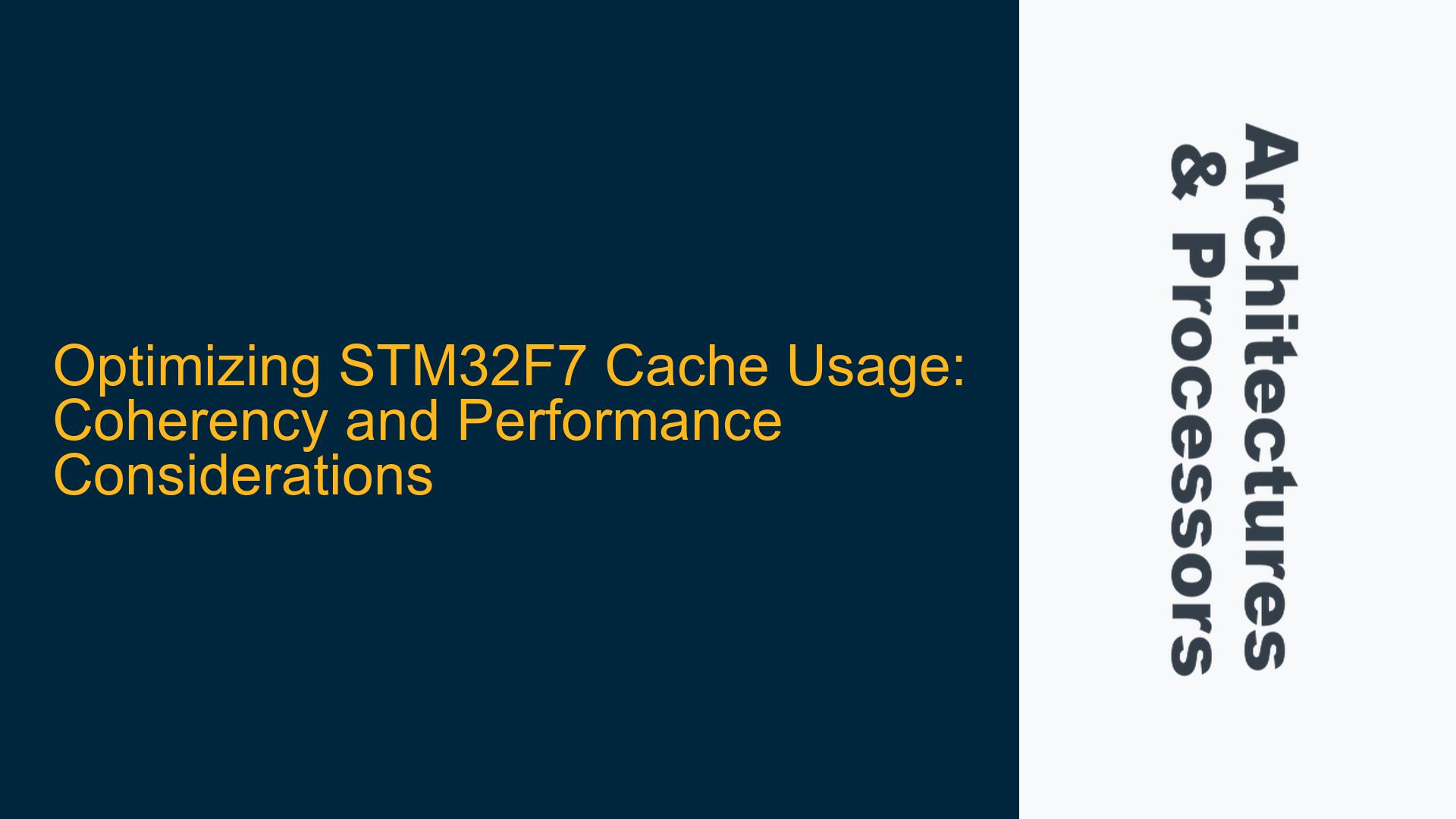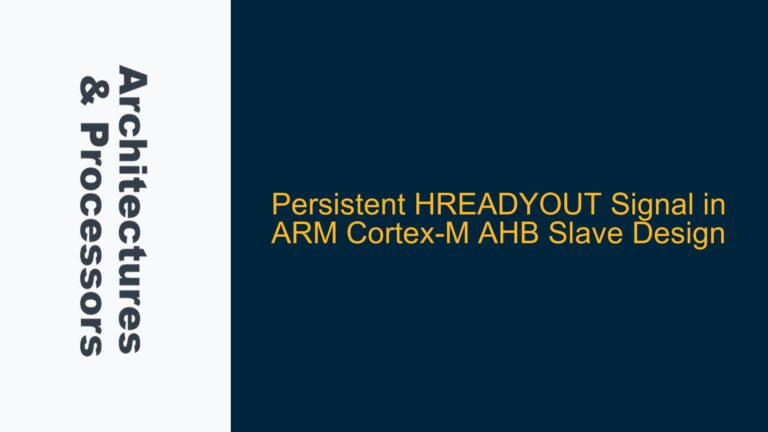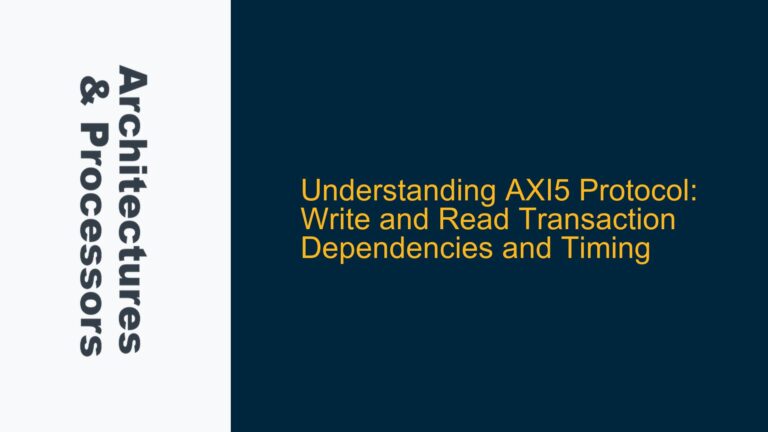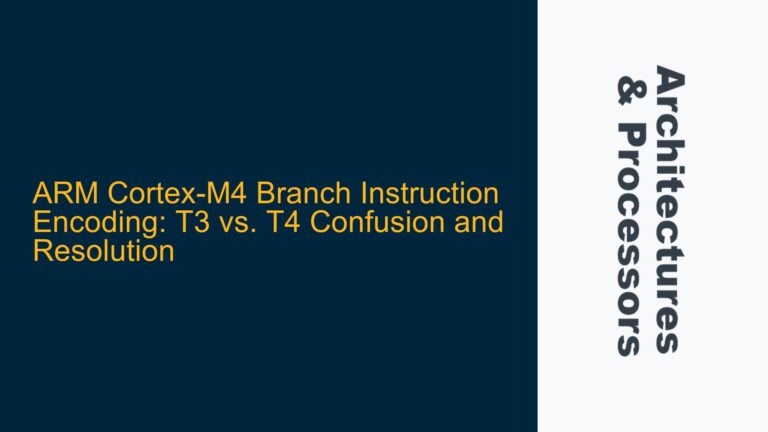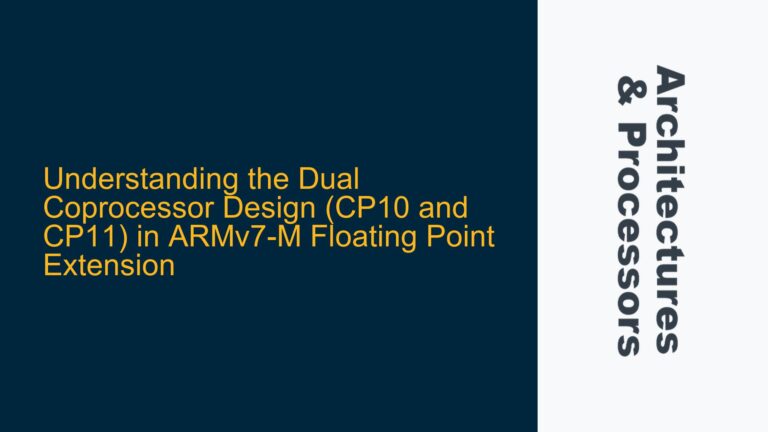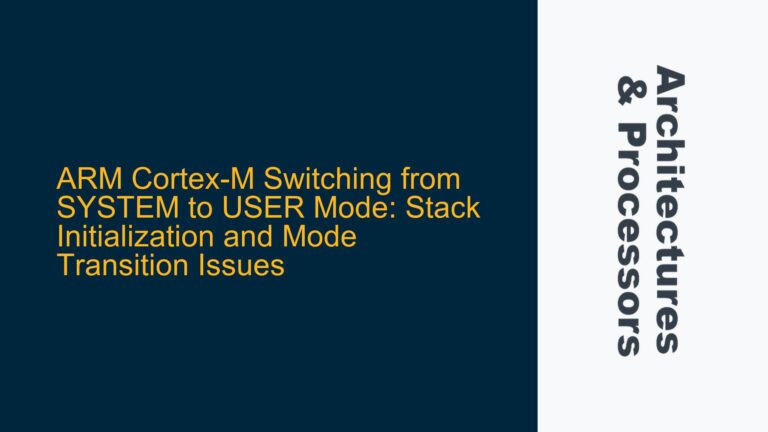ARM Cortex-M7 Cache Coherency Challenges in STM32F7
The ARM Cortex-M7 processor in the STM32F7 series introduces advanced features such as instruction and data caches, which significantly enhance performance by reducing memory access latency. However, these caches introduce complexities, particularly regarding data coherency between the cache and Flash memory. The STM32F7 reference manual explicitly states that ensuring data coherency is the responsibility of the user code, which can be a daunting task for developers unfamiliar with cache management.
The primary issue arises from the fact that the Cortex-M7 employs a Harvard architecture with separate instruction and data buses. While this architecture improves performance by allowing simultaneous instruction and data fetches, it complicates cache coherency because the Flash memory and the cache may hold different versions of the same data. For example, if the Flash memory is updated (e.g., through a firmware update or DMA transfer), the cache may still hold stale data, leading to incorrect program behavior.
The ART (Adaptive Real-Time) accelerator further complicates the scenario. The ART accelerator is designed to optimize Flash memory access by prefetching instructions and caching them in the instruction cache. According to the STM32F7 reference manual, the ART accelerator enables zero-wait-state program execution from Flash memory at CPU frequencies up to 216 MHz. However, this performance boost is only available for Flash access on the ITCM (Instruction Tightly Coupled Memory) interface. If the cache is enabled, the ART accelerator’s effectiveness depends on proper cache management to ensure that the cached instructions are consistent with the Flash memory contents.
In summary, the core issue revolves around the trade-off between performance and coherency. Enabling the cache can significantly improve performance, but it requires careful management to ensure data coherency between the cache and Flash memory. Failure to address this coherency can lead to subtle bugs, such as incorrect program execution or data corruption.
Memory Barrier Omission and Cache Invalidation Timing
The lack of data coherency between the cache and Flash memory in the STM32F7 can be attributed to several factors, with the most prominent being the omission of memory barriers and improper cache invalidation timing. Memory barriers are essential for enforcing the correct order of memory operations, especially in systems with caches. Without memory barriers, the processor may reorder memory accesses, leading to inconsistent views of memory between the cache and Flash.
In the context of the STM32F7, memory barriers are particularly important when dealing with DMA (Direct Memory Access) transfers. DMA allows peripherals to read from or write to memory without CPU intervention, which can improve system performance. However, if the cache is enabled, the DMA controller may access a stale version of the data in memory, while the CPU operates on a cached version. This inconsistency can be avoided by using memory barriers to ensure that the cache is flushed or invalidated before the DMA transfer begins.
Another critical factor is the timing of cache invalidation. Cache invalidation is the process of marking cache lines as invalid, forcing the processor to fetch fresh data from memory. In the STM32F7, cache invalidation must be performed at the right time to ensure coherency. For example, if the cache is invalidated too early, the processor may fetch stale data from memory before the DMA transfer completes. Conversely, if the cache is invalidated too late, the processor may continue to use stale data from the cache, leading to incorrect results.
The ART accelerator introduces additional timing considerations. Since the ART accelerator prefetches instructions from Flash memory and caches them in the instruction cache, any changes to the Flash memory (e.g., firmware updates) must be followed by cache invalidation to ensure that the processor fetches the updated instructions. Failure to invalidate the cache at the right time can result in the processor executing outdated instructions, leading to undefined behavior.
In summary, the primary causes of cache coherency issues in the STM32F7 are the omission of memory barriers and improper cache invalidation timing. These issues are exacerbated by the presence of the ART accelerator, which relies on the cache to deliver its performance benefits. Addressing these causes requires a deep understanding of the Cortex-M7 architecture and careful implementation of cache management techniques.
Implementing Data Synchronization Barriers and Cache Management
To address the cache coherency challenges in the STM32F7, developers must implement data synchronization barriers and proper cache management techniques. These steps ensure that the cache and Flash memory remain consistent, even in the presence of DMA transfers and firmware updates.
Data Synchronization Barriers
Data synchronization barriers (DSBs) are essential for enforcing the correct order of memory operations. In the STM32F7, DSBs should be used to ensure that cache operations (e.g., flushing or invalidation) are completed before proceeding with DMA transfers or Flash memory updates. The ARM Cortex-M7 provides several barrier instructions, including DSB, DMB (Data Memory Barrier), and ISB (Instruction Synchronization Barrier).
For example, before initiating a DMA transfer, developers should use a DSB instruction to ensure that all previous memory operations are completed. This prevents the DMA controller from accessing stale data in memory. Similarly, after updating the Flash memory, developers should use a DSB instruction to ensure that the cache is invalidated before fetching new instructions.
Cache Flushing and Invalidation
Cache flushing and invalidation are critical for maintaining coherency between the cache and Flash memory. Flushing the cache writes dirty cache lines back to memory, ensuring that the memory contains the most recent data. Invalidating the cache marks cache lines as invalid, forcing the processor to fetch fresh data from memory.
In the STM32F7, cache flushing and invalidation should be performed in the following scenarios:
-
Before DMA Transfers: If the DMA controller is writing to memory, the cache should be flushed to ensure that the DMA controller accesses the most recent data. If the DMA controller is reading from memory, the cache should be invalidated to ensure that the processor fetches fresh data after the transfer completes.
-
After Flash Memory Updates: If the Flash memory is updated (e.g., through a firmware update), the instruction cache should be invalidated to ensure that the processor fetches the updated instructions.
-
During Context Switches: If the operating system performs context switches, the cache should be flushed and invalidated to ensure that each task operates on consistent data.
The STM32F7 provides several registers for cache management, including the Cache Maintenance Operations (CMO) registers. These registers allow developers to perform cache flushing and invalidation operations at a granular level, ensuring that only the necessary cache lines are affected.
ART Accelerator Configuration
The ART accelerator can significantly improve performance, but it requires proper configuration to ensure coherency. Developers should enable the ART accelerator only for Flash access on the ITCM interface, as recommended by the STM32F7 reference manual. Additionally, the ART accelerator should be configured to prefetch instructions and cache them in the instruction cache, reducing the number of Flash memory accesses.
To maximize the benefits of the ART accelerator, developers should ensure that the instruction cache is properly managed. This includes invalidating the cache after Flash memory updates and using memory barriers to enforce the correct order of memory operations.
Practical Example
Consider a scenario where the STM32F7 is performing a firmware update. The following steps illustrate how to ensure cache coherency during the update:
- Disable Interrupts: Disable interrupts to prevent context switches during the update.
- Flush Data Cache: Flush the data cache to ensure that all dirty cache lines are written back to memory.
- Update Flash Memory: Write the new firmware to the Flash memory.
- Invalidate Instruction Cache: Invalidate the instruction cache to ensure that the processor fetches the updated instructions.
- Enable Interrupts: Re-enable interrupts to resume normal operation.
By following these steps, developers can ensure that the cache and Flash memory remain consistent, even during firmware updates.
Performance Considerations
While cache management is essential for coherency, it can also impact performance. Frequent cache flushing and invalidation can increase memory access latency, reducing the benefits of the cache. To mitigate this, developers should optimize cache management operations by performing them only when necessary. For example, cache invalidation should be performed only after Flash memory updates, not during normal operation.
Additionally, developers should consider the size of the cache when optimizing performance. The STM32F7 provides configurable cache sizes, allowing developers to balance performance and memory usage. Larger caches can improve performance by reducing the number of cache misses, but they also consume more memory and may increase power consumption.
Conclusion
Enabling the cache in the STM32F7 can significantly improve performance, but it requires careful management to ensure coherency between the cache and Flash memory. By implementing data synchronization barriers, performing cache flushing and invalidation at the right time, and properly configuring the ART accelerator, developers can maximize the benefits of the cache while avoiding coherency issues. These techniques are essential for building reliable and high-performance embedded systems based on the ARM Cortex-M7 architecture.
